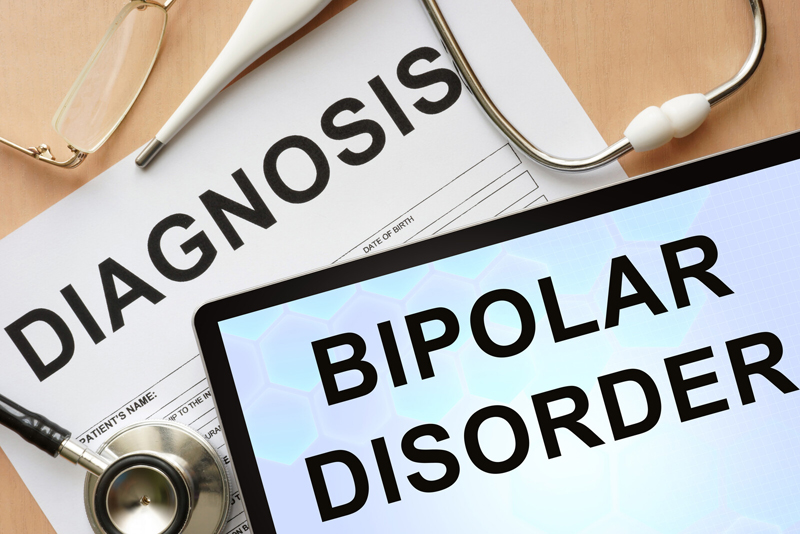Bipolar 2 disorder, formerly known as manic depression, is characterized by at least one depressive episode and at least one hypomanic episode. The APA says this less severe disorder is more common than bipolar 1.
People with bipolar 2 can have both episodes of mood swings and periods of neutral feelings. The frequency of these mood changes depends on the individual.
Causes
Although scientists do not know precisely why the bipolar disorder occurs, they think it has several factors. These include genetics, environmental stress and trauma, and how a person’s brain works.
People with bipolar 2 experience periods of intense emotion (mood episodes) and a less severe form of manic episodes called hypomanic episodes. The symptoms of a hypomanic episode are the same as those of a manic episode but do not affect the individual’s ability to function daily.
A manic episode may include euphoria, increased energy, and decreased need for sleep. However, it can also lead to racing thoughts, low self-esteem, and high-risk behaviors such as gambling, drug or alcohol abuse, and unrestrained spending.
It’s essential to get help if you have a mania episode or are experiencing other symptoms of bipolar disorder. Treatment can prevent an episode from worsening or causing more problems.
Keeping track of your moods and how your medications work can help you find a treatment plan that works for you. Writing down your symptoms and identifying triggers can also be helpful when trying a new medication.
Psychiatric medications can help keep bipolar 2 disorder in check, especially when combined with psychotherapy. These medications include mood stabilizers, antipsychotics, and antidepressants. They can also help decrease the risk of suicide.
Symptoms
Bipolar 2 disorder causes unusual mood, energy, and activity shifts. What is bipolar 2? It can disrupt your everyday life and interfere with your capacity to work or study.
The disorder usually develops in early adulthood. But it can start in children and teens, too.
People with a family history of bipolar disorder are more likely to develop the condition. However, a genetic predisposition to the disorder is also thought to play a role.
In addition, stress and traumatic events can trigger episodes in some people with bipolar disorder. Scientists are exploring the link between these factors and how they may help prevent bipolar disorder onset or improve treatment outcomes.
Symptoms of bipolar disorder include periods of extreme “up,” elated, energized behavior (mania), and periods of severe “down” depression. Mania is more potent than hypomania and can affect your ability to work or study and your relationships with friends and family.
The symptoms of bipolar 2 disorder can be triggered by stress, alcohol or drug abuse, and other environmental factors. Fortunately, treatment can be effective in managing symptoms and helping you get your life back on track.
Prevention
Prevention is a strategy that aims to decrease the risk of developing a disease or condition by avoiding the things that cause it and increasing the factors that protect against it. For example, those with bipolar 2 disorder can change their diet, exercise, and lifestyle to help reduce the severity and frequency of their symptoms.
Maintaining healthy habits can also improve your mood and increase your resilience to the symptoms of bipolar 2 disorder. These health practices include eating well, exercising regularly, and managing stress.
Keeping up with your medication can also help you manage your symptoms. Be sure to talk with your doctor about your medication if you have questions or concerns.
Avoiding alcohol and drugs is a critical preventive measure for bipolar 2. These substances can trigger episodes of mania or depression and interfere with your ability to respond to stress and other symptoms of bipolar disorder.
If you’re diagnosed with bipolar 2, you’ll receive treatment to help you control your symptoms and improve. Treatment can be administered by a doctor, psychiatrist, psychiatric nurse, or psychologist.
Long-term, regular therapy can help you deal with your symptoms and improve your quality of life. You can get started by filling out a quick questionnaire to get matched with a therapist.
Many people with bipolar 2 disorder can lead normal, fulfilling lives after receiving treatment. Some people need more help than others, however.
Treatment
Treatment for bipolar 2 disorder can include medication and psychotherapy, proven to help people with the condition. Medication can treat episodes of mania and depression, while psychotherapy helps people identify and change troubling thoughts and behaviors.
Mood stabilizers, antipsychotics, and antidepressants are common medications used to treat the symptoms of bipolar disorder. They may help keep you from bouncing between depressive and manic phases and improve your quality of life.
In many cases, medications will be prescribed by a doctor or mental health specialist. Your GP or specialist can tell you which medicine is best for you and whether to combine it with other medicines.
Your therapist will use talk therapy to teach you valuable skills, such as understanding your emotions, changing negative thinking patterns, and improving communication with loved ones. This kind of therapy can be helpful if you find that the medication isn’t working as well as you had hoped.
You and your therapist will likely work together to make a plan that includes medication, psychological treatment, and lifestyle management. It means controlling your stress, exercising regularly, and eating a healthy diet.
Your therapist may also recommend family-focused therapy, which includes psycho education on bipolar disorder, communication improvement training, and problem-solving skills. It can be especially helpful for families dealing with the emotional disruptions and stress caused by a loved one with the condition.



